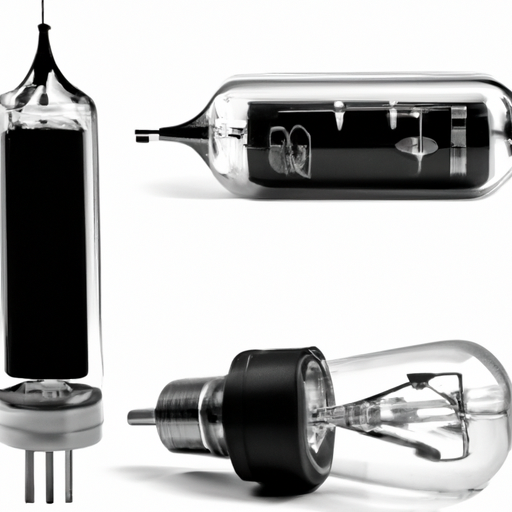Audio-only vacuum tubes have been a staple in the world of audio equipment for decades. These tubes, also known as valves, have been used in amplifiers, preamplifiers, and other audio devices to enhance the sound quality and provide a warm, rich tone that is highly sought after by audiophiles and musicians alike.

One of the most common uses of audio-only vacuum tubes is in guitar amplifiers. Many guitarists prefer the sound of a tube amplifier over a solid-state amplifier because of the warmth and richness that tubes provide. Tube amplifiers are also known for their dynamic range and responsiveness, making them ideal for capturing the nuances of a guitarist's playing style.
In addition to guitar amplifiers, audio-only vacuum tubes are also used in hi-fi audio equipment such as stereo amplifiers, preamplifiers, and phono stages. These devices are designed to reproduce music with the highest fidelity possible, and vacuum tubes are often chosen for their ability to provide a more natural and lifelike sound compared to solid-state components.
Another application of audio-only vacuum tubes is in professional audio equipment such as recording consoles and microphone preamplifiers. Vacuum tubes are often used in these devices to add warmth and character to the sound, making recordings sound more natural and pleasing to the ear.
In recent years, there has been a resurgence of interest in vacuum tube technology, with many audio enthusiasts and musicians seeking out vintage tube equipment or new products that incorporate vacuum tubes. This renewed interest in vacuum tubes has led to the development of new tube designs and technologies that offer improved performance and reliability.
One of the main advantages of audio-only vacuum tubes is their ability to produce a natural, musical sound that is highly prized by audiophiles and musicians. Vacuum tubes are known for their warm, rich tone and smooth distortion characteristics, which can add depth and dimension to music. This is why many audio professionals and enthusiasts continue to prefer vacuum tube equipment over solid-state alternatives.
In addition to their sound quality, vacuum tubes also have a unique aesthetic appeal that adds to their allure. The glowing filaments and glass envelopes of vacuum tubes have a nostalgic charm that harkens back to the early days of audio technology. Many people find the sight of a tube amplifier or preamplifier with its tubes glowing warmly to be a visually pleasing and comforting experience.
Despite their many advantages, audio-only vacuum tubes do have some drawbacks. Vacuum tubes are more fragile and delicate than solid-state components, and they require more maintenance and care to keep them operating at their best. Tubes also tend to be larger and heavier than solid-state components, which can make them less practical for portable or space-constrained applications.
Another potential downside of vacuum tubes is their relatively high cost compared to solid-state components. Vacuum tubes are more expensive to manufacture and are less common than solid-state components, which can drive up the cost of tube-based audio equipment. However, many audio enthusiasts and musicians are willing to pay a premium for the superior sound quality and unique characteristics that vacuum tubes provide.
In conclusion, the main application direction of audio-only vacuum tubes is in audio amplification, where they are prized for their warm, natural sound and musical characteristics. Vacuum tubes are used in a wide range of audio equipment, from guitar amplifiers to hi-fi stereo systems to professional recording equipment. Despite their drawbacks, vacuum tubes continue to be a popular choice among audio enthusiasts and musicians who value the unique sound and aesthetic appeal of tube-based audio equipment.





